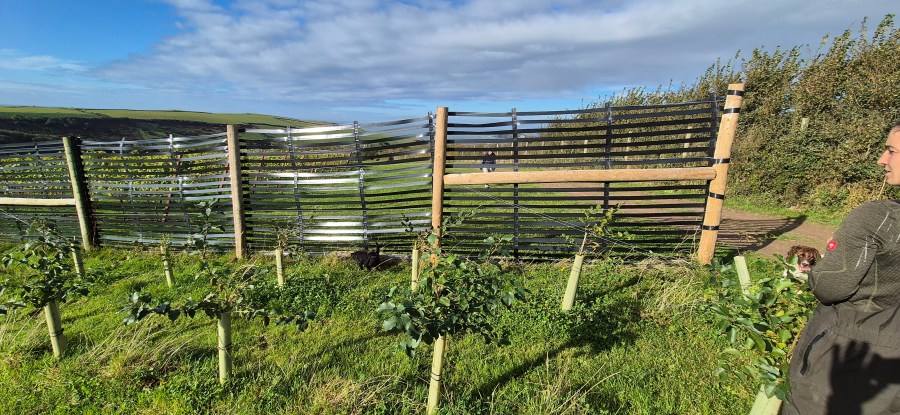Challenges and solutions.
Winter is the ideal time for ordering, planting new, or rejuvenating existing windbreaks. Whether for a vineyard about to be planted or one that is well-established, understanding wind’s impact in viticulture is essential for deciding when and where to install windbreaks. Compared to planting and maintaining vines, windbreaks are relatively inexpensive to establish and become increasingly cost-effective as their benefits mature over time.
The role of wind in viticulture
Wind significantly influences the environment and terroir of vineyards, particularly in coastal and exposed areas. Features such as valleys, altitude, and proximity to the sea amplify wind effects, impacting vineyard planning and vine orientation. Properly managed, wind can become an ally rather than a liability.
Benefits and challenges Wind, though often viewed as a challenge, offers several advantages in viticulture. Moderate winds reduce spring frost risks, cool vines on hot days, and limit humidity, thereby lowering the incidence of fungal diseases. However, excessive wind creates its own set of challenges.
Strong or sustained winds can cool and dry vines excessively, reducing vigor, delaying ripening, and resulting in smaller leaves, fewer grape clusters, and lower yields. Such winds exacerbate water stress, especially in sandy or chalky soils. Physical damage includes broken shoots, stripped leaves, and damaged inflorescences, compromising vine health and increasing susceptibility to diseases like powdery mildew and grapevine trunk diseases. High winds may also cause soil erosion, particularly in vineyards on steep slopes or with insufficient ground cover.
Wind damage and identification
Young, fast-growing vines are particularly vulnerable during spring and early summer, with tender shoots often damaged or broken. As the growing season progresses, mature leaves may suffer tearing, reducing photosynthesis and impacting fruit quality as well as the vine’s ability to withstand cold. Wind-damaged canes may wilt and die, often misdiagnosed as disease or insect damage, but closer inspection reveals breakage at the base.
Mitigating the effects
To counteract the challenges of wind, growers should prioritise shelter when establishing vineyards. Selecting protected sites and orienting vine rows parallel to prevailing winds are good starting points. However, as climate patterns shift and vineyards have long lifespans, these measures may not always suffice.
Natural and artificial windbreaks provide more adaptable solutions. Natural windbreaks, such as tree rows, and man-made structures, like windproof fencing or netting, offer essential protection. Italian alders are a popular choice in UK vineyards for their fast growth, straight form, and minimal bird-nesting suitability. Other commonly used species include poplars, hawthorn, ash, and beech.
Well-placed windbreaks improve the microclimate within a vineyard by reducing windspeed. This minimises physical damage, protects leaves and fruit from whipping, and enhances photosynthesis. They also support water conservation by reducing evaporation and improving the efficiency of nutrient and pesticide applications.
Designing effective windbreaks
The effectiveness of a windbreak depends on careful design and species selection. Tall, strategically placed windbreaks can insulate a vineyard’s microclimate, promoting pollination and fruit set while boosting yields. However, growers must ensure windbreaks do not cast excessive shade, compete with vines for nutrients, or introduce allelopathic effects that inhibit vine growth.
Temporary windbreaks, such as fabric sheeting, offer flexible, short-term solutions that can support young vines or the establishment of permanent structures. Permanent windbreaks, like treelines or hedges, provide long-lasting benefits but require careful placement to avoid operational interference or shading of vines.
Conclusion
Wind, while challenging, can be managed effectively through careful planning and the implementation of windbreaks. By balancing its benefits – such as cooling, frost reduction, and disease prevention – with its potential drawbacks, growers can harness the advantages of wind to enhance vineyard resilience and fruit quality. As climate conditions evolve, these strategies will remain integral to sustaining the health and productivity of vineyards.
For more like this, sign up for the FREE Vineyard newsletter here and receive all the latest viticulture news, reviews and insight




